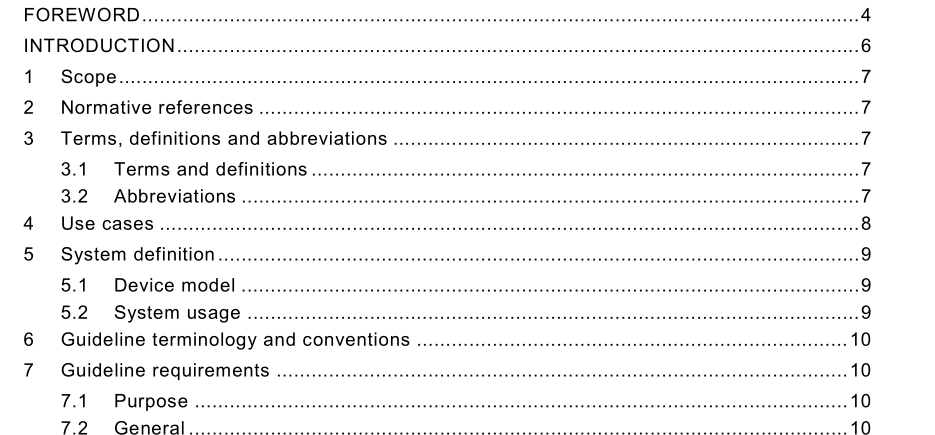IEC 62576-2009 pdf Electric double-layer capacitors for use in hybrid electric vehicles – Test methods for electrical characteristics

3.1 9 pre-conditioning discharging and storage of a capacitor under specified ambient conditions (temperature, humidity, and pressure) before testing NOTE Generally, pre-conditioning implies that a capacitor is discharged and stored until its inner temperature attains thermal equilibrium with the surrounding temperature, before its electrical characteristics are measured. 3.20 voltage treatment voltage application before measurement of a capacitor’s electrical characteristics NOTE Generally, this treatment is applied to a capacitor that has been stored for a long time or to a capacitor whose history is not clear. 3.21 post-treatment (recovery) discharging and storage of a capacitor under specified ambient conditions (temperature, humidity, and pressure) after tests NOTE Generally, post-treatment implies that a capacitor is discharged and stored until its inner temperature attains thermal equilibrium with the surrounding temperature before its electrical characteristics are measured. 3.22 charging efficiency efficiency under specified charging conditions, and ratio (%) of stored energy to charge accumulated electrical energy. This value is calculated from the internal resistance of a capacitor NOTE Refer to Equation C.8 in Annex C. 3.23 discharging efficiency efficiency under specified discharging conditions, and ratio (%) of discharge accumulated electrical energy to stored energy. This value is calculated from the internal resistance of a capacitor NOTE Refer to Equation C.1 0 in Annex C.
4.1.4 Measurement After the setting as specified above, the voltage-time characteristics between capacitor terminals as shown in Figure 2 shall be measured. 4.1 .5 Calculation method for capacitance The capacitance C shall be calculated using Equation (1 ) based on the voltage-time characteristics between capacitor terminals obtained in 4.1 .4.
The test equipment shall be as specified in 4.1 .2. The test equipment shall be capable of constant current charging, constant voltage charging, constant current discharging, and continuous measurement of the current and the voltage between the capacitor terminals in time-series as shown in Figure 5. The test equipment shall be able to set and measure the current and the voltage by the accuracy equal to ±1 % or less. The power supply shall provide the constant charge current for the capacitor charge with 95 % efficiency, set the duration of constant voltage charge, and provide a discharge current corresponding to the specified discharge efficiency. The d.c. voltage recorder shall be capable of conducting measurements and recording with a 5 mV resolution and sampling interval of 1 00 ms or less.
- ISO IEC 27050-4-2021 pdf Information technology — Electronic discovery — Part 4: Technical readiness
- ISO IEC 27036-1-2021 pdf Cybersecurity — Supplier relationships — Part 1: Overview and concepts
- ISO IEC 27013-2021 pdf Information security, cybersecurity and privacy protection — Guidance on the integrated implementation of ISO/IEC 27001 and ISO/IEC 20000-1
- ISO IEC 26580-2021 pdf Software and systems engineering — Methods and tools for the feature- based approach to software and systems product line engineering
- ISO IEC 24735-2021 pdf Information technology — Office equipment — Method for measuring digital copying productivity
- ISO IEC 24711-2021 pdf Information technology — Office equipment — Method for the determination of ink cartridge yield for colour inkjet printers and multi- function devices that contain printer components
- ISO IEC 23544-2021 pdf Information Technology — Data centres — Application Platform Energy Effectiveness (APEE)
- ISO IEC 23510-2021 pdf Information technology — 3D printing and scanning — Framework for an Additive Manufacturing Service Platform (AMSP)
- ISO IEC 23127-1-2021 pdf Information technology — Learning, education, and training — Metadata for facilitators of online learning — Part 1: Framework
- ISO IEC 23126-2021 pdf Information technology for learning, education and training — Ubiquitous learning resource organization and description framework
- BS ISO IEC 15420-2009 pdf Information technology一 Automatic identification and data capture techniques EAN/UPC bar code symbology specification
- ISO IEC 11160-2-2021 pdf Office equipment — Minimum information to be included in specification sheets — Part 2: Class 3 and Class 4 printers
- IEC 61255-2014 pdf Household electric heating pads – Methods for measuring performance
- IEC 60317-36-2013 pdf Specifications for particular types of winding wires – Part 36: Solderable polyesterimide enamelled round copper wire, class 180, with a bonding layer
- IEC TR 62713-2013 pdf Safety procedures for reduction of risk outside a structure
- BS ISO IEC 15420-2009 pdf Information technology一 Automatic identification and data capture techniques EAN/UPC bar code symbology specification
- BS IEC 60860-2014 pdf Radiation protection instrumentation一 Warning equipment for criticality accidents
- BS ISO IEC 19762.5-2008 pdf Information technology一 Automatic identification and data capture (AIDC) techniques – Harmonized vocabulary Part 5: Locating systems
- ISO IEC 24735-2021 pdf Information technology — Office equipment — Method for measuring digital copying productivity
- ISO IEC 24711-2021 pdf Information technology — Office equipment — Method for the determination of ink cartridge yield for colour inkjet printers and multi- function devices that contain printer components